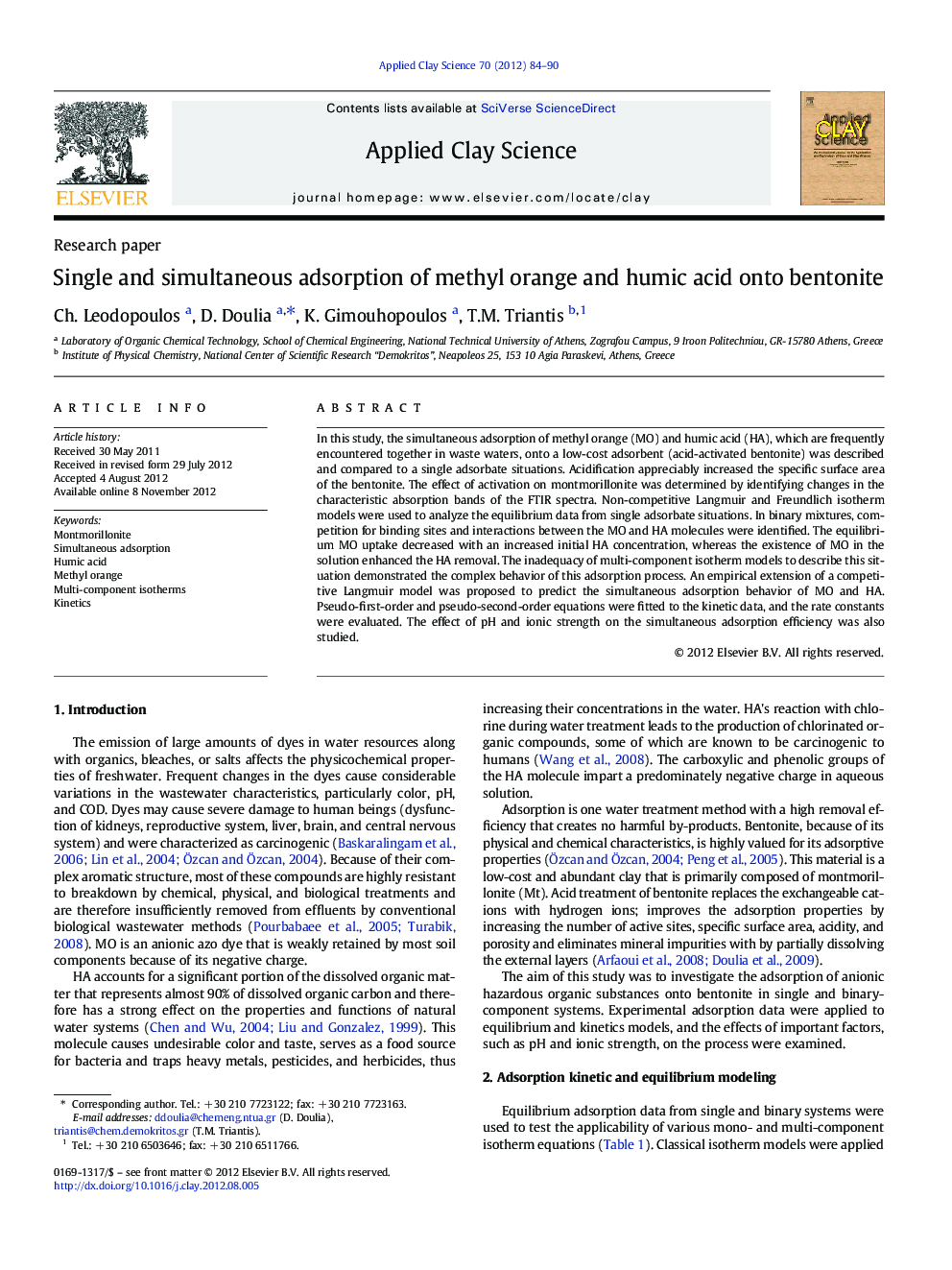| Article ID | Journal | Published Year | Pages | File Type |
|---|---|---|---|---|
| 1695088 | Applied Clay Science | 2012 | 7 Pages |
In this study, the simultaneous adsorption of methyl orange (MO) and humic acid (HA), which are frequently encountered together in waste waters, onto a low-cost adsorbent (acid-activated bentonite) was described and compared to a single adsorbate situations. Acidification appreciably increased the specific surface area of the bentonite. The effect of activation on montmorillonite was determined by identifying changes in the characteristic absorption bands of the FTIR spectra. Non-competitive Langmuir and Freundlich isotherm models were used to analyze the equilibrium data from single adsorbate situations. In binary mixtures, competition for binding sites and interactions between the MO and HA molecules were identified. The equilibrium MO uptake decreased with an increased initial HA concentration, whereas the existence of MO in the solution enhanced the HA removal. The inadequacy of multi-component isotherm models to describe this situation demonstrated the complex behavior of this adsorption process. An empirical extension of a competitive Langmuir model was proposed to predict the simultaneous adsorption behavior of MO and HA. Pseudo-first-order and pseudo-second-order equations were fitted to the kinetic data, and the rate constants were evaluated. The effect of pH and ionic strength on the simultaneous adsorption efficiency was also studied.
► Adsorption of methyl orange and humic acid onto bentonite. ► Effect of pH and ionic strength on simultaneous adsorption.
